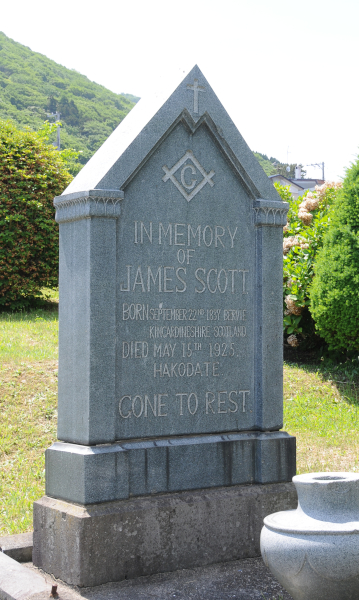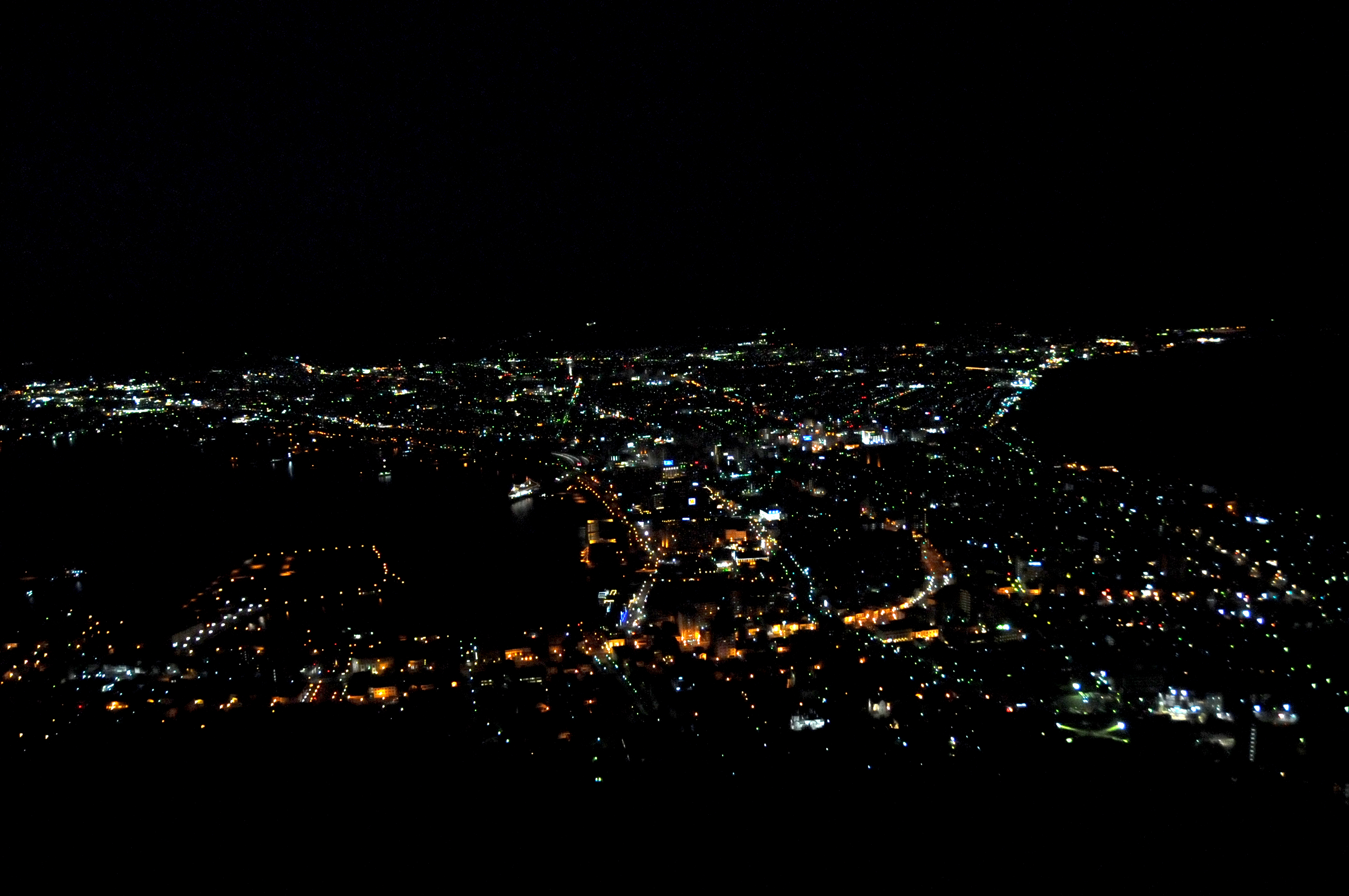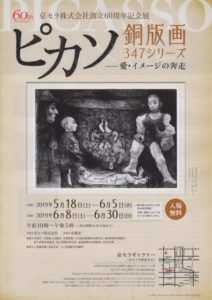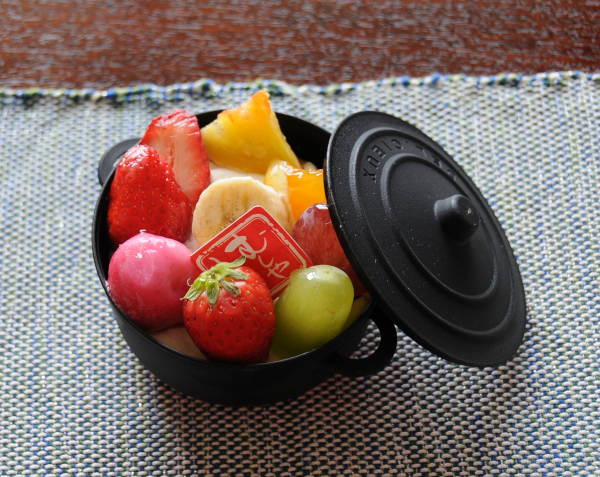I’m back! 😉 You probably didn’t catch the book reference, but last weekend I visited Hakodate on Hokkaido, which is just on the other side of the Tsugaru Strait, where Ozamu Dazai walked in the 1940s.
Hakodate, founded in 1454, is the former capital of Hokkaido, at a time when the island was still called Yezo and was mostly unexplored and inhabited by “scary” Ainu, the people indigenous to Japan. Hakodate is an interesting city because in 1854 it was the first port to be opened to foreign trade and thus it had a large influx of foreigners from many countries.
This can be seen in two ways: In the old town, there are houses that are distinctly Western style, and made from bricks even. The old quarter also has many churches and foreign consulates, unfortunately, not all of the old houses are in a good state, although there are some renovation efforts going on. For Westerners, the houses look nice but not something we haven’t seen before, but the Japanese love visiting Hakodate for the “foreign flair”.

At the edge of the old town, there are several cemeteries for foreigners, strictly separated by country of origin or religion. There is the Russian cemetery, the Chinese cemetery, a catholic cemetery (which also has graves of local Japanese Christians – as I said, there are many churches here) and a cemetery for foreigners in general.

Another interesting part of the old town is down at the harbour, where there are old warehouses made from red bricks, that now are home to a great number of (souvenir) shops and other stores. From there, it is not far to Mount Hakodate which has a wonderful view over the city which is especially beautiful in the night. Of course, we went up there as well, and we could even see the lights of Aomori on the “main land” of Japan.

My personal favourite, however, was the Goryokaku Fort, a traditional star fort built a bit more inland that was meant to protect the government offices that were relocated inside, once the fort was finished. It reminded me of similar forts I had visited in the Netherlands, but it seems that such forts have been built all over the world, from Europe to the US and even Asia (probably during European colonisation).

My friend and I had a great time even though we had to cram all of the sights into less than two days. We have seen almost all of them and on Sunday, we walked altogether 14 km… At first, the idea was to walk up Mt. Hakodate for the nightly view, but in the end we decided to just take the cable car. We also visited the Museum of Northern Peoples with interesting exhibits of not just the Ainu, but other peoples from northeast Russia as well.

There are two things I’m slightly miffed about: First, I don’t think I got enough fish and seafood on my trip, something Hakodate is famous for. Unfortunately, my friend doesn’t like fish at all, so we had to compromise. She would have been fine with eating onigiri all the time while I had my fish, but that’s not fair; after all, I can have seafood everywhere else. I also wanted to stock up on cheese which is really expensive in Japan, and since Hokkaido is famous for its dairy products, I was hoping for lots of choice for a fair price. Not so! It seems that they prefer to make sweet things (like cheesecake) out of their milk, and the little that is turned into “real” cheese is still almost prohibitively expensive…
Altogether, I had a great trip though. My friend is fun to be with, and we have a similar way of approaching sightseeing, so that was perfect (even though she is in better physical shape than I was). This was my second time in Hokkaido, and I found it very pleasant. I guess I’ll be back, eventually… To finish this already long post, here’s a list of some striking things I noticed in Hakodate:
- the air is so clear and fresh!
- private houses have a closed glass porch before their entrance door (and indeed, it was quite windy)
- there are people smoking on the streets (you don’t see much of them in Kyoto)
- there is SO MUCH SPACE! Wide streets, buildings with gardens…
- In case of a tsunami, much of Hakodate would be flooded.

 Gion Matsuri, probably the biggest party in Japan, is going on right now. Today is yoiyama, the night before the big parade with food stalls and music and fun throughout the inner city – and I didn’t go. I guess I’m getting old…
Gion Matsuri, probably the biggest party in Japan, is going on right now. Today is yoiyama, the night before the big parade with food stalls and music and fun throughout the inner city – and I didn’t go. I guess I’m getting old…












